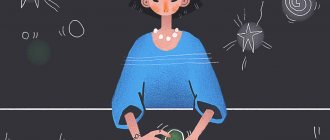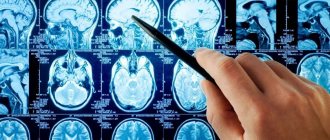In our age of overabundance of information, stress and crazy speeds, the problem of mental health, or more precisely, ill-health, is becoming almost the most important.
As you know, mental health, the same “healthy spirit” that ancient healers loved to talk about, is an integral component of health in general. Alas, the features of modern life make us extremely vulnerable to various mental disorders. And the disease does not distinguish whether the person in front of it is young or old, man or woman.
In terms of prevalence, mental health disorders are now among the leaders after cardiovascular diseases and cancer. According to WHO, more than 560 million people on the planet already suffer from various mental illnesses. And almost every second person is in danger of contracting a mental illness during their lifetime.
Very often, serious psychoneurological diseases such as neurosis and psychosis .
1 Diagnosis and treatment of neurosis
2 Diagnosis and treatment of neurosis
3 Diagnosis and treatment of neurosis
What lies behind the terms neurosis and psychosis?
We are so used to throwing around the words “hysterical”, “neurasthenic”, “psychopath” that we often forget that we use medical terms as curses or even ridicule. Meanwhile, there is nothing funny in these words.
Neurosis
Neurosis can be briefly described as follows:
- This is nervous exhaustion, a long-term chronic disorder that can develop in a person against the background of stress or a traumatic event.
- The personality of a patient suffering from neurosis usually does not undergo major changes. The person maintains a critical attitude towards the disease; he can control his behavior.
- As a rule, neurosis is manifested by vegetative, somatic and affective disorders.
- This is a reversible (curable) disease.
The most common types of this disease are:
- neurasthenia (asthenic neurosis, fatigue syndrome);
- hysteria (hysterical neurosis);
- various phobias (fears, panic attacks) and obsessive states (obsessive neurosis).
One of the main reasons for the formation of neurosis is stress in the broadest sense of the word, be it a childhood trauma, an unfavorable climate in the family, a crisis at work, nervous strain, interpersonal conflict or emotional shock.
According to medical statistics, the state of neurosis is familiar firsthand to 10-20% of the population of our planet, and approximately 5% of the world's inhabitants suffer from various types of psychosis.
Psychosis
Speaking about psychosis, it is necessary to note the following:
- This is a mental disorder characterized by inappropriate human behavior and an atypical reaction to events and phenomena.
- It manifests itself as mental disorders, in particular, disturbances in the perception of reality (hallucinations, delusions).
- It develops unnoticed by the patient and may be a consequence of pathologies of the endocrine and nervous systems.
- Capable of completely changing the patient's personality.
- This is a difficult to cure disease.
Psychoses according to their origin are usually divided into:
- Endogenous , that is, associated with internal causes (somatic diseases, hereditary mental disorders, age);
- Exoorganic , caused by external factors (infections, intoxication, etc.) or associated directly with a violation of the structure of the brain (trauma, hemorrhage, neoplasms, etc.).
The first group includes:
- affective insanity;
- senile (senile);
- affective;
- schizophrenic;
- epileptic;
- symptomatic psychosis, etc.
The exogenous group includes:
- reactive acute psychosis;
- intoxication;
- infectious;
- alcoholic psychosis, etc.
1 Biofeedback therapy in the treatment and diagnosis of psychosis
2 Biofeedback therapy in the treatment and diagnosis of psychosis
3 Biofeedback therapy in the treatment and diagnosis of psychosis
Diagnostics
In each specific case of a neurotic disorder, a varied pattern of symptoms of different types of neurosis may be demonstrated. All this can be accompanied by various symptoms of mental and somatic disorders, which creates certain difficulties in diagnosis. Therefore, the qualifications of the attending physician, his medical experience and professional skills are so important.
The collected anamnesis is of great importance - the patient’s complaints, his description of the nature and intensity of the symptoms, the time of their manifestation. It will also be important to talk with loved ones, since they can often provide valuable information. Medical observation in a hospital setting may be required to confirm or refute the diagnosis.
It is necessary to carefully check the level of hormones in the body, since the development and course of depression or neurosis are strongly influenced by hormones. This is especially true for thyroid hormones; even minor changes in their levels, which are difficult to detect using conventional tests, can have a very significant effect on well-being. If a hormonal imbalance is detected, proper hormonal therapy must be initiated. In some cases, normalization of thyroid function leads to a complete cure for neurosis.
Differentiated diagnosis is important when you need to be able to distinguish one pathology from another. Provided that neuroses are often accompanied by somatic symptoms, the doctor will prescribe an appropriate examination. In addition to general laboratory tests (blood, urine), specific studies (hormonal levels) may be required. If a brain disorder is suspected, magnetic resonance imaging (MRI) or computed tomography (CT) is recommended.
Signs of psychosis and neurosis
Symptoms of psychosis
Recognizing warning signs is sometimes not easy, but you should pay close attention to any changes that appear in the character and habits of a loved one.
Characteristic symptoms of psychosis are:
- decreased performance or febrile activity;
- mood swings;
- irritability, suspicion;
- desire for self-isolation;
- unexplained change of interests;
- sleep disturbances, decreased appetite;
- careless attitude towards one's appearance;
- increased vulnerability and other atypical reactions to events and phenomena;
- impaired coordination of movements;
- incoherent speech;
- hallucinations, delusions.
Symptoms of neurosis
It is quite difficult for a non-specialist to identify a nervous disorder. And yet the clinic of neurosis has characteristic features.
Neurosis may be indicated by:
- decreased cognitive abilities;
- depressed mood, tearfulness;
- self-doubt, low self-esteem;
- irritability, dissatisfaction;
- frequent changes of mood;
- obsessive thoughts;
- fixation on bad news and events;
- unmotivated anxiety states;
- poor appetite, disturbances in the gastrointestinal tract;/li>
- cardiovascular symptoms;
- insomnia and other sleep disorders;
- violations in the sexual sphere;
- increased sensitivity to noise, light, vibrations, etc.
1 Diagnosis and treatment of neurasthenia
2 Diagnosis and treatment of neurasthenia
3 Diagnosis and treatment of neurasthenia
Children's fears and facial tics are also symptoms of neurosis.
Very often in everyday life people confuse the concepts of “neurosis” and “neurasthenia”. Let us repeat once again: neurasthenia is a type of neurosis, one of its most common forms.
Characteristic symptoms of neurasthenia are:
- decreased intellectual abilities;
- dizziness, headaches (the so-called neurasthenic helmet);
- increased fatigue;
- sleep disorders;
- disruptions in the gastrointestinal tract;
- chest pain;
- mood swings;
- low self-esteem;
- decreased potency and libido.
Neurotic depression
Neurotic depression is typically characterized by a depressed state with some inhibition of psychomotor reactions and thinking. There are monotonous depressive memories, pessimistic views of the future, and fixation on the traumatic situation. There is a tendency to tearfulness, irritability, decreased appetite, sleep disturbance, sensitivity (excessive emotional sensitivity).
Neurotic depression does not reach the depth of psychosis, is reversible, and goes away when a traumatic situation is analyzed or under the influence of treatment.
Treatment of neuroses and psychoses
Only a neurologist (psychoneurologist, psychotherapist, psychiatrist) who has undergone appropriate training and has sufficient practical experience in helping patients with neurological and mental disorders can conduct a competent diagnosis of the disease, identify its causes and offer adequate treatment.
Treatment of psychoses and neuroses (including treatment of neurasthenia) is, as a rule, a whole complex of measures that includes many stages.
So, a combination of the following methods helps to achieve a good result:
- drug therapy;
- phytotherapy;
- psychotherapy;
- hardware treatment;
- water procedures;
- reflexology;
- special gymnastics;
- therapeutic diet, etc.
A positive attitude, the right environment, a normal family environment, maintaining a healthy lifestyle, maintaining a work and rest schedule, and eliminating “stress-forming” factors (even changing your place of work or area of residence) are extremely important for recovery.
Psychotherapy
In order to alleviate neurotic symptoms (by taking antidepressants), psychotherapy is carried out:
- Cognitive-behavioral therapy – formation in the patient of the correct reaction to the situation, strengthening his adequate assessment of his behavior in a traumatic situation, changing the way he responds to it;
- group psychotherapy – takes place for 1.5 hours daily or weekly, in the form of discussions. Topics are determined in advance; they relate to the biography, behavior of group members, and life situations. Group therapy has rules: strict confidentiality, sincerity of participants, experience “here and now,” specificity of topics. Groups can be closed - with a constant composition of participants, or open - someone comes, someone stops visiting;
- hypnotherapy - suggestion is carried out in a special state of the patient, hypnotic. The session includes 4 stages: hypnotization, therapeutic suggestion, therapeutic rest, dehypnotization;
- autogenic training;
- breathing exercises for relaxation and concentration;
- non-verbal methods of psychotherapy - music therapy, art therapy, dancing and pantomime.
The most effective treatment is a combination of antidepressant medication and cognitive behavioral therapy.
Why you should visit a MedicCity neurologist
If you experience psychological discomfort and tension, feel trapped, and cannot relax even in your sleep, do not delay visiting a doctor. Delicately and professionally, our specialist will help you understand the causes of your condition and give all the necessary recommendations. Don't be left alone with your troubles!
We provide assistance for various neurological diseases, as well as disorders in the functioning of other organs and systems of the body. If necessary, you can get advice from another specialist - doctors from over 30 specialties conduct appointments at the clinic every day.
Drug therapy
The course of neurosis is associated with a simultaneous decrease in the level of brain serotonin, therefore long-term use of antidepressants - selective serotonin reuptake inhibitors - is prescribed for treatment. At the initial stage of treatment with antidepressants, their adverse reactions may occur, and the patient’s condition may worsen. In view of this, it is important not to stop taking the prescribed treatment, but only to reduce the dose of the drugs. Then, as tolerance improves, the dosage is gradually increased to the recommended values. Over time, the symptoms of neurosis decrease and the patient's condition improves.
Important: the antidepressant must be selected by a doctor! The selection takes into account the individual tolerability of the drug and its effectiveness for specific neurotic symptoms.
For the treatment of neuroses accompanied by insomnia or poor sleep, sedative and hypnotic antidepressants are prescribed. Sometimes, with great caution and in small doses, in short courses (to avoid addiction), tranquilizers are prescribed. When treating neuroses with concomitant weakness, memory loss, and asthenia, nootropic drugs are used. The duration of treatment is usually several months; if necessary, the course must be repeated.









